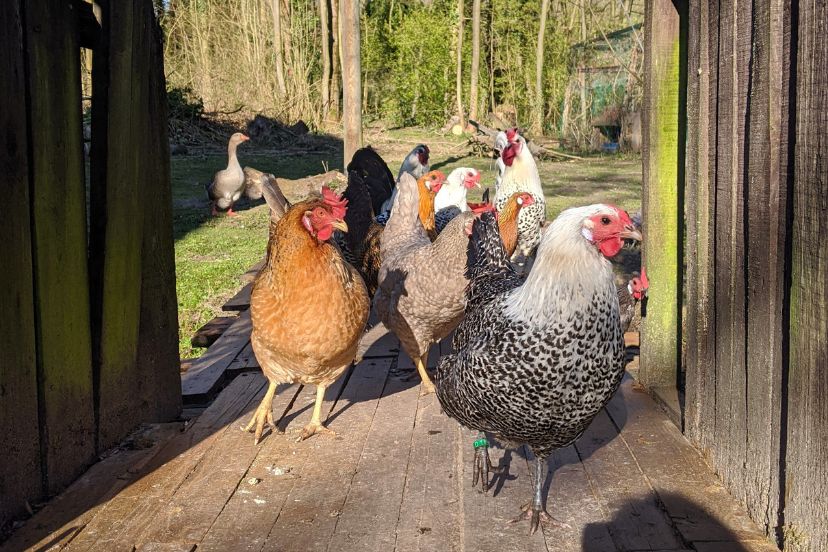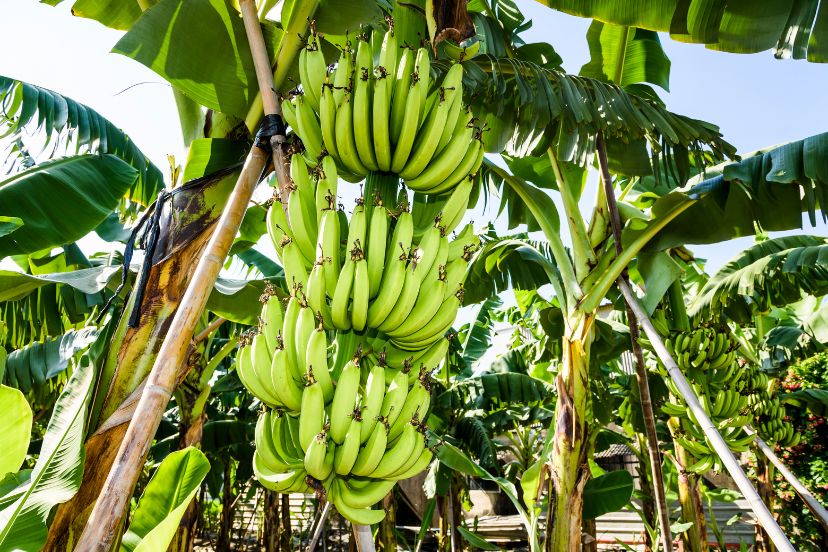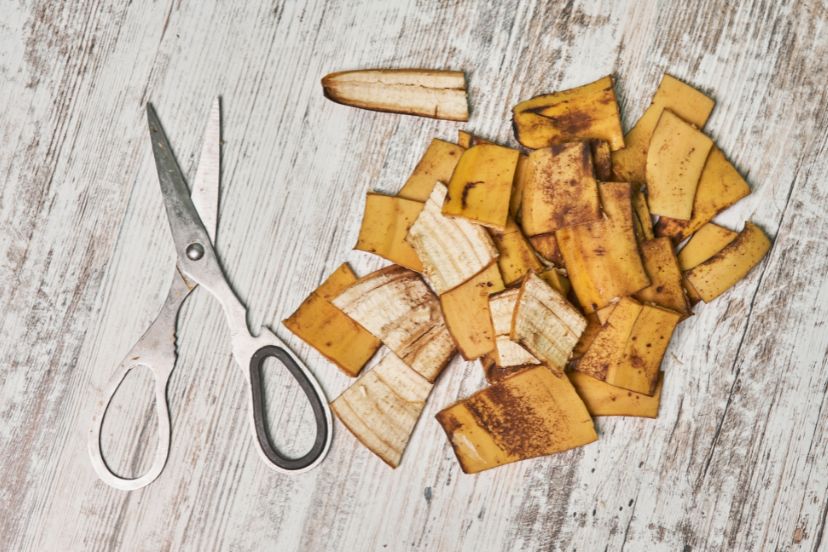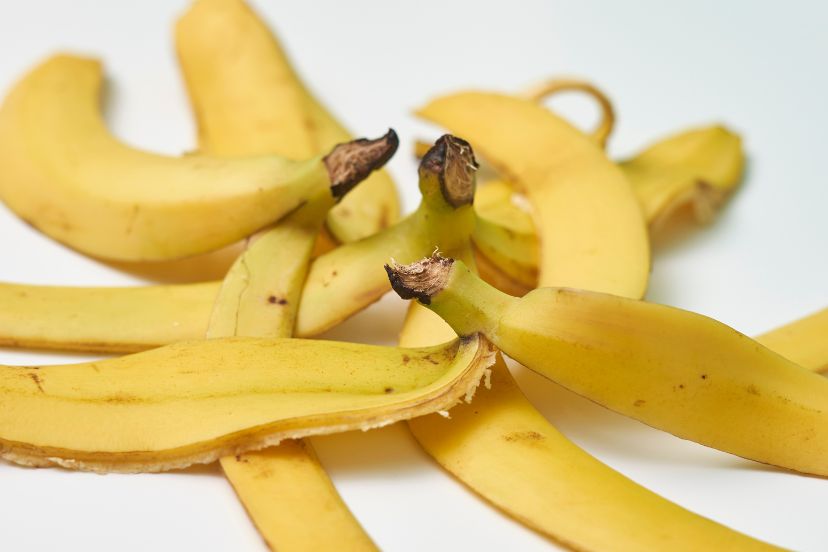Can Chickens Eat Banana Peels?
Did you know that your kitchen leftovers could be a gourmet meal for your feathered friends? When we finish eating a banana, we often throw away the peel without a second thought. But hang on. Can chickens eat banana peels? Is it something they would enjoy? Let’s find out.
Nutritional Value of Banana Peels
Often, we don’t give banana peels a second thought, seeing them as mere natural wrappers that we discard after enjoying the sweet, creamy fruit inside. But, you might find it surprising that these frequently thrown away items are actually a nutritional goldmine.
To start with, banana peels are loaded with dietary fibers. These fibers can aid in digestion by providing bulk to a chicken’s diet and assisting in the regulation of bowel movements. Fiber also moderates the speed of sugar absorption into the bloodstream, which helps maintain balanced blood sugar levels – a crucial factor for your chickens’ overall health
Next up is protein. While banana peels aren’t a high protein source, they still contribute a small amount, making them a nice supplement to your chicken’s main feed.
The peels are rich in antioxidants, such as lutein, zeaxanthin, and beta-carotene. Antioxidants play a crucial role in promoting cellular health and combating oxidative stress, which can lead to a host of health issues.
Banana peels are also a good source of various vitamins and minerals. They are notably high in vitamin C, which aids in the development of healthy feathers and boosts the immune system. Banana peels also have an abundance of Vitamin B6, a nutrient that actively contributes to brain development and function, influences mood, and stimulates growth.
Furthermore, banana peels contain significant levels of potassium, a mineral that plays a vital role in maintaining heart health and promoting efficient cellular function.
Yet, it’s important to consider that banana peels’ nutrient profile carries a significant sugar amount. Hence, the question “can chickens eat banana peels?” requires understanding that moderation in feeding is crucial. Overfeeding can potentially lead to health complications like obesity in chickens.
Can Chickens Digest Banana Peels?
Before tossing that banana peel into your chicken coop, it’s crucial to understand the dynamics of a chicken’s digestive system and their ability to process these seemingly tough and fibrous scraps.
Here’s a basic rundown of how it works:
- It all starts when a chicken pecks at its food, which then travels down the esophagus into the crop, a sort of storage unit where food can be stored and softened.
- From the crop, the food travels to the proventriculus, or the chicken’s equivalent of our stomach. Here, digestive enzymes are added to break down the food further.
- The food then proceeds to the gizzard, a strong muscular organ that grinds the food into smaller particles. Chickens don’t have teeth, so the gizzard functions to physically break down the food.
- Lastly, the body absorbs nutrients from the pulverized food through the intestines, and excretes the remaining waste.

Can chickens eat banana peels? Yes, they can. However, preparation and portion control are key to ensure this unusual treat doesn’t become a problem for your feathered friends.
Now, let’s focus on banana peels. Their tough and fibrous nature raises questions about a chicken’s ability to digest them. However, chickens, thanks to their robust gizzard, can typically handle such items fairly well.
Chickens often ingest small pebbles or grit, which remains in the gizzard and aids in grinding up food, including hard-to-digest items like banana peels. The peels get broken down into smaller, manageable pieces that the chicken’s digestive system can handle.
Nevertheless, some caution is necessary. Banana peels should be cut into small pieces before feeding them to your chickens. This way, the chickens can more easily digest the peels, and the risk of choking or impaction is significantly reduced.
Benefits of Feeding Banana Peels to Chickens
Just as the saying goes, “One man’s trash is another man’s treasure,” the same holds true for chickens and banana peels. Here are some key benefits of feeding these peels to your chickens:
Boost in Nutrient Intake
Banana peels serve as a nutritional bonus to your chickens’ regular diet. They’re a surprisingly good source of nutrients, including dietary fiber, protein, and a range of vitamins and minerals. These nutrients play a vital role in maintaining the overall health of your chickens.
Fiber, for example, promotes good digestion, while the protein present aids in muscle development and repair. Vitamins and minerals, such as vitamin C, vitamin B6, and potassium, contribute to various functions like feather development, brain function, and cellular health, respectively.
In addition, banana peels are a source of antioxidants, which are beneficial for boosting the immune system and fighting off diseases. The key is to use banana peels as a supplement, not a replacement, to their main feed.
Environmental Benefits
Feeding banana peels to chickens has another significant advantage: it helps reduce food waste. Instead of throwing out these peels, you can put them to good use as a cost-effective, nutritious treat for your chickens.
According to the United Nations Food and Agriculture Organization, about a third of the food produced globally for human consumption gets lost or wasted. By using your banana peels as chicken feed, you’re doing your part to reduce this figure and make your household more environmentally friendly.
Moreover, when you choose to feed your chickens banana peels, you’re reducing the demand for commercially produced chicken feed, much of which often involves environmentally harmful production practices.

The benefits of feeding banana peels to chickens extend beyond your backyard coop. They contribute to your chickens’ health while playing a role in waste reduction and environmental sustainability.
Potential Risks of Feeding Banana Peels to Chickens
While the prospect of a nutritional boost and environmental benefits makes feeding banana peels to chickens appealing, it’s critical not to overlook the potential risks. From possible pesticide exposure to choking hazards, understanding these risks is as important as acknowledging the benefits.
Pesticides and Chemicals
One of the major concerns with feeding banana peels – or any other fruit peels, for that matter – to chickens is the possible presence of pesticides and other chemicals. Farmers often spray many fruits, including bananas, with pesticides to ward off pests during their growth period. Even though these chemicals serve to protect the fruit, ingestion can lead to harm.
If you’re feeding your chickens banana peels from conventionally grown bananas, these could contain residual pesticides, despite thorough washing. These chemicals could potentially accumulate in a chicken’s system over time and have detrimental effects on their health. This risk is significantly reduced with organically grown bananas, which are typically cultivated without the use of harmful pesticides. However, they are often more expensive.
Choking Hazard
Banana peels have a tough, fibrous texture, which could pose a choking hazard to chickens. If a chicken tries to swallow a large piece of peel, it could get stuck in their throat or crop, leading to discomfort and potential health issues.
To mitigate this risk when feeding banana peels to chickens, you should chop them into small, manageable pieces first. Chickens can eat banana peels more comfortably this way, easily pecking and swallowing the bits, significantly reducing the risk of choking.
While banana peels can provide numerous benefits to chickens, these potential risks highlight the importance of careful preparation and moderation when incorporating them into your chickens’ diet.
How to Safely Feed Banana Peels to Chickens
Understanding the potential risks, you can feed banana peels to chickens safely. The presence of pesticides is a concern; thus, choosing organic bananas, grown without synthetic pesticides, is safer. However, if budget or availability restricts you, washing banana peels thoroughly can minimize risk.
To prevent choking, chop banana peels into small pieces. Consider drying them for storage convenience and added crunchiness, which chickens may find appealing.
Monitor your chickens when introducing banana peels. If they relish the treat without discomfort or illness signs, you can continue. Conversely, negative reactions should prompt you to remove banana peels from their diet.
Banana peels should be treats, not dietary staples. Your chickens’ primary diet should be balanced commercial chicken feed, supplemented with various fruits, vegetables, and grains for diverse nutrients. This dietary approach ensures your chickens get all the vital nutrients for optimal health.

As long as you are mindful of the potential risks and take the necessary precautions, feeding banana peels to your chickens can be a great way to supplement their diet while reducing food waste.
Alternatives to Banana Peels
If, for any reason, you choose not to feed banana peels to your chickens, don’t worry! There are many other kitchen scraps that make nutritious and delicious treats for your feathered friends. Here are some excellent alternatives:
Apple Cores: Apples are a favorite among many chicken breeds. Packed with essential nutrients like vitamins A and C, along with fiber, they offer immense benefits. However, you need to ensure the removal of seeds, as they contain potentially harmful cyanide in large amounts.
Carrot Peels: Carrots are another nutritious treat for chickens. They are rich in vitamins A and C, as well as fiber. Both raw and cooked carrots are safe for chickens, and you can feed them the peels, tops, or even the carrot itself.
Lettuce Leaves: Chickens love greens, and lettuce leaves make a fantastic treat. They not only offer nutritional benefits, including vitamins A, K, and C, but also provide hydration due to their high water content.
Cucumber: Cucumbers, like lettuce, are high in water content, making them a refreshing and hydrating treat for your chickens, especially during the hot summer months.
Melon Rinds: After you’ve enjoyed a delicious melon, don’t toss those rinds! Chickens love them, and they’re a great way to help keep your chickens hydrated.
Pumpkin Seeds: Not only are pumpkins seeds a fun treat for chickens to peck at, but they also have the added benefit of being a natural dewormer.
Cooked Rice: Cooked rice is another safe and much-loved treat. It’s an excellent source of carbohydrates, providing your chickens with energy.
All these treats should be fed in moderation and should not replace a balanced chicken feed diet. And just as with banana peels, always monitor your chickens when introducing any new food item to their diet. Different chickens may have different preferences, and what one chicken loves, another might not be too keen on. The key is variety and moderation.
FAQs
Can chickens eat bananas along with the peels? Yes, you can feed your chickens bananas and their peels, but remember to do so moderately and only as an occasional treat.
How should I prepare banana peels for my chickens? You should wash the peels thoroughly to remove any pesticides, then chop them into small, manageable pieces to avoid choking hazards.
Are there any specific breeds of chickens that can’t eat banana peels? There are no specific breeds that can’t eat banana peels. However, always monitor your chickens when introducing new food to their diet.
What other kitchen scraps can chickens eat? Chickens can eat a variety of kitchen scraps, including vegetables, fruits, grains, and bread. Always research before feeding them something new.
How often can I feed banana peels to my chickens? You should treat banana peels as a special treat, not as a staple in the diet. A few times a week is more than enough. Always ensure that they have a balanced diet.




